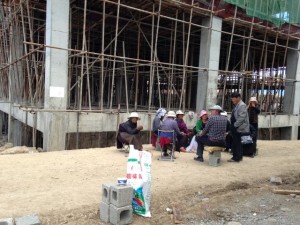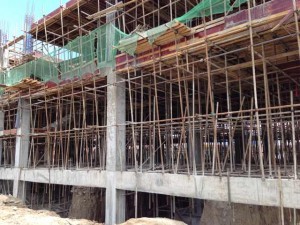
A group of 16 elderly Tibetans has been forced to end a month-long sit-in demonstration against appropriation of their land following intimidation by local police in Village No. 1 in Ngaba (Ch: Aba) County in Ngaba Tibetan and Qiang Autonomous Prefecture, Sichuan Province.
According to information received by TCHRD, the group of demonstrators represents 16 families in Village No. 1 whose land, spanning 40 mu (one mu equals 67 square meters of land), had been seized in 1986 after local government promised to provide government jobs to the affected families. The promises made by the government never materialised leaving the families more impoverished than before.
On 14 September 2013, the affected families submitted a petition to local authorities making three key demands. The petition was written in Chinese language and bore the thumbprints of the 16 elderly Tibetans whose names are Chindrong, Pugo, Zonpo, Detso Kyi, Muney, Tsekyi, Peltse, Tenpa Gyaltsen, Phulkyi, Nak Dhonkho, Jhakho, Dhonkho, Norkho, Choedup, Kelsang Sonam, Kundup (names transliterated from their Chinese versions).
First, the petition calls on the Chinese government to provide employment to one family member from each affected family as had been promised, and to compensate the affected family members for denying them employment in the past 27 years. Second, the affected families must have ownership over the roads and premises surrounding the newly-built multi-storey structures on the appropriated land. The last point in the petition demands that the government return 6 mu of unused land since 34 mu of land are already being used to built multi-storey for real estate purposes.
On 17 September 2013, three days after submitting the petition, the 16 elderly Tibetans launched a sit-in demonstration at the site of appropriated land which is located near the Ngachu River. For more than a month, the group of demonstrators had been sleeping and eating in makeshift tents erected on the site.

On 20 October 2013, the elderly demonstrators were forced to vacate the site after local police threatened them with imprisonment. The Tibetans were told that their sit-in demonstration had brought the ongoing construction work on the land to a halt. Sources with contacts in Ngaba said the police had lied to the elderly Tibetans that they were responsible for obstructing the construction work because construction work normally stops when the climate gets colder.
Since the late 1980s, the affected families have petitioned local authorities 50 times demanding that the government deliver on its promises. Local authorities had seized 40 mu of land in June 1986 saying they wanted to build a cattle slaughterhouse and a cold storage facility. At the time, the local government had paid 350 yuan per mu as compensation and also promised to provide employment to the affected families.
Between 1988 and 1990, as the local government kept dragging its feet on the issue, local Tibetans submitted two petitions but were told by the then County head Orgyen Kyap that the authorities were doing a trial run of the slaughterhouse and the cold storage facility and that the matter would be addressed by the County government at an appropriate time. Over the next few years, the then County head died and the matter remained unresolved.

Again in 2006, representatives of the 16 affected families approached the members of the Villagers’ Committee and apprised them of the situation. But the then Village party secretary Chen Bao and Village leader Sonam came up with the excuse that they were trying to get loans from the local government to renovate the village parking area and raising the land issue would harm their chances of getting the loan.
For the next few years since 2008, the affected families stopped petitioning thinking that the local government would misconstrue their activities as political in light of widespread protests and self-immolations in Ngaba County.

Sources told TCHRD that after the failure of the original project, local authorities sold the slaughterhouse and the cold storage facility, and used the money to engage in other profit-making ventures such as the ongoing construction work on the appropriated land where new buildings have come up apparently for real estate purposes.
